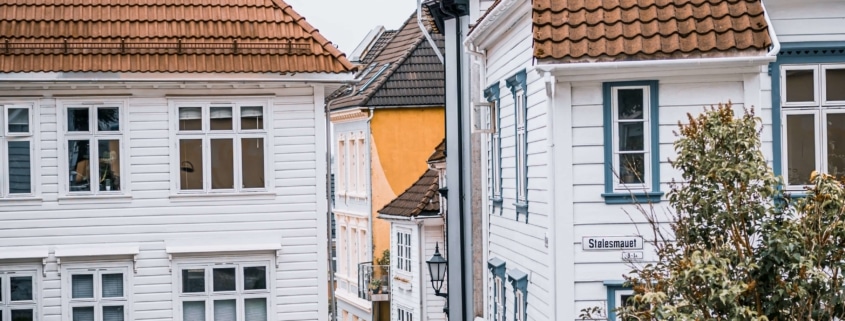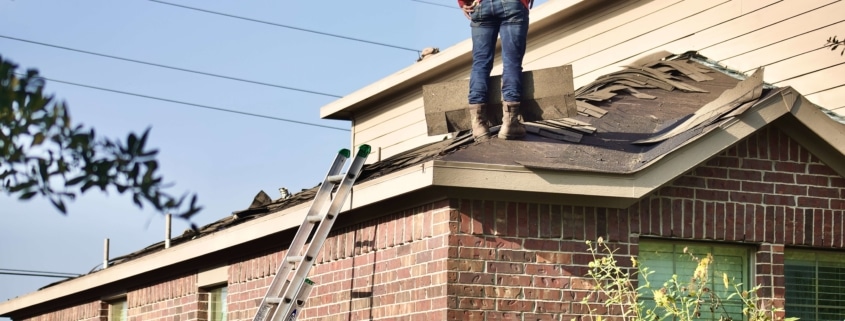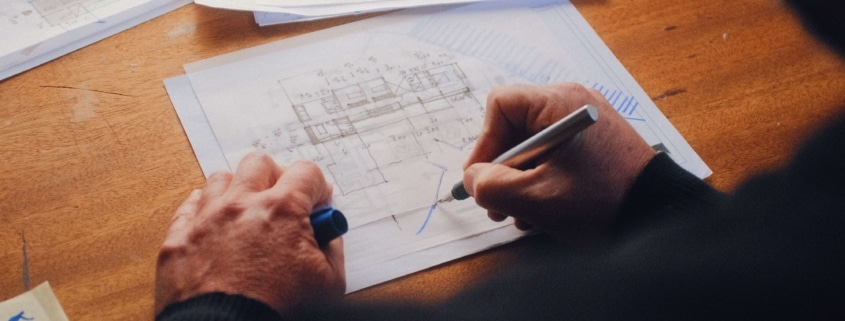Whether you’re an owner looking to renovate, a customer looking to buy, or an architect planning a project, it’s no secret that there are a multitude of factors to consider when it comes to a house. One of the most important and most prominent factors to consider however is what kind of roof you ought to look for or install on a building.
Traditionally, asphalt shingles have long been the standard, go-to roofing option in the United States, but increasingly they’ve faced more competition from metal roofing. Metal roofs can be made in a variety of materials (zinc, tin, aluminum, copper, or steel), but all metal roofs will tend to offer the same benefits and drawbacks when compared to asphalt shingling (the main difference between the various materials being price).
This article will thoroughly explore all the factors one must keep in mind when deciding between Metal Roof vs Asphalt Shingles, and lay out the advantages and disadvantages of each choice.
Pros of Metal Roofing
Low Maintenance
Perhaps one of the greatest advantages of a metal roof is the fact that, once properly installed, they require almost no maintenance. Most roofing metals are highly resistant to damage, thanks to a protective patina that will self-heals minor scratches naturally over time. They are also antimicrobial, and won’t suffer from mold or algae, unlike asphalt shingles.
Longevity/Sustainability
Unsurprisingly, a metal roof is far more durable than a shingle one. While a shingle roof will generally need to be replaced every 25 years or so, a metal roof will generally last between 50 to 80. Apart from saving homeowners the cost and hassle of replacing a roof several times in their lifetime, longer-lasting products have a naturally positive effect on the environment, requiring less raw material and waste.
Most kinds of metal roofs are also highly recyclable and can be melted down and reused once they reach the end of their natural lifespan.
They Boost Home Value
Adding a feature to your home that’s durable and cost-saving in the long run is naturally a benefit to the building’s overall value. This can increase the property’s value, and even potentially save on insurance, as some firms will offer lower rates to encourage a safe long-term investment.
Cons of Metal Roofing
Limited Availability of Professionals
Although metal roofing is growing in popularity, it’s still distinctly in the minority compared to traditional shingles. This means that finding a reliable professional in your area with the expertise needed to install a metal roof can be challenging.
Time and Labor Intensive
Similar to our last point, a metal roof requires specialized knowledge and tools to install, and because of this, is a more intensive process, requiring longer to install than shingles.
Pros of Shingle Roofing
Practical
There can be no denying the benefit of being able to easily remove or replace broken or moldy tiles as needed. Even an informed non-professional can walk directly on their roof to do simple repairs on their own.
Affordable
Although a metal roof is a sound investment that will ultimately save money in the long run, the up-front cost of installing an asphalt shingle roof is objectively cheaper than metal. Sometimes, financial realities will demand the cheaper immediate fix of shingles.
Widespread
If finding a qualified, reliable professional to install a metal roof can be difficult, then naturally the opposite holds true for the single most common form of roofing in the nation. It will almost certainly never be hard to find a good professional at a reasonable price for shingle roofs.
Cons of Shingle Roofing
High Maintenance
Compared to a metal roof which can be “set and forget”, a shingle roof will need to be replaced sooner and will require regular maintenance. Whether it’s a hail storm, pests, algae, or just the passage of time, shingle roofs must be monitored and regularly kept in good condition.
Environmentally Unsustainable
Unlike metal roofs which can be recycled at the end of their service life, asphalt shingles are a petroleum product, reliant on fossil fuels to be produced and very difficult (if not impossible) to recycle.
Aesthetically Limited
Metal roofs, apart from being able to be designed in interesting and non-conventional forms, come in a variety of colors suitable for both historic and modernist looks. On the other hand, if you have seen one shingle roof, it could be said that you’ve seen them all. While singles are often aesthetically pleasing, they don’t exactly offer very much range or variety.
Calling in the Experts
When it comes to architectural metal, there’s no more trustworthy and high quality name than MetalTech Global. As the nation’s premier fabricator and distributor of finished, coil, and sheet metal, we are home to the single largest stocking center for architectural zinc in the country. With decades of experience and an expansive portfolio of projects completed using our top-notch materials, we’re here to ensure that your next construction project is completed with only the best in expertise and service. Contact us today for a consultation on how we can help you reach your architectural goals.



